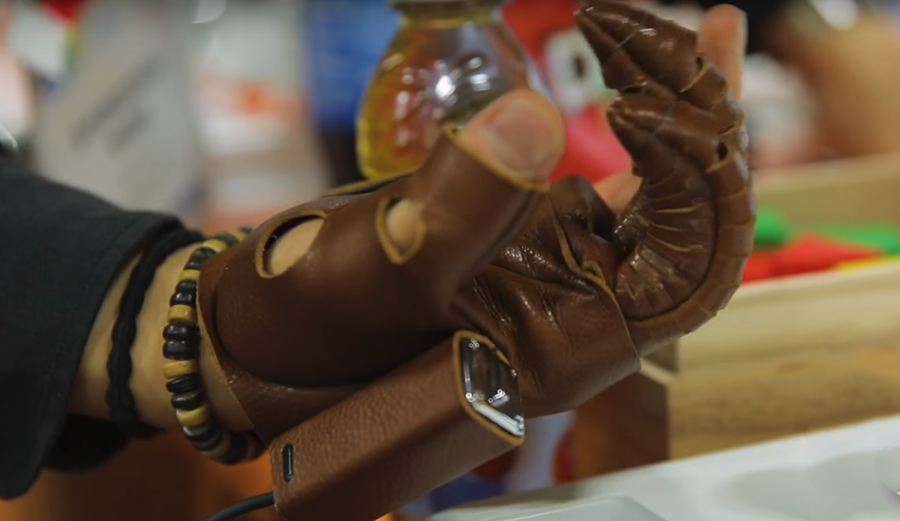Patients with spinal cord injury may experience symptoms like pain, numbness or even paralysis. Patients may be unable to perform everyday tasks, thereby leaving a lasting impression on the quality of life of the person. Now, a Korean company Neofect has developed a glove called NeoMano, which wraps around the palm as well as index and middle fingers in order to hold objects.
Related Scientists Develop Flexible Artificial Tactile Nerve Using Flexible Organic Materials
Neofact, which is known for rehabilitation tools like the Rapael Smart Board and the Rapael Smart Glove, showed off a prototype of the NeoMano at CES. The glove is made of leather and looks a bit like an archery glove that covers just the thumb, index and middle finger.
NeoMano, which means “new hand” in a Latin/Spanish amalgamation, has titanium wires that make those three fingers move to perform tasks such as holding a toothbrush, picking up a glass or gripping the door knob.
The glove connects to a rubber pad that can be controlled with an elbow or arm to activate grip and release motions. It’s a simple mechanism where two wires run down the length of each finger and triggering the grip reels them in, enabling wearers to pick up objects as heavy as about 1kg. The company says the lightweight glove is designed to be worn every day.
Although, it may not be an elegant solution, it’s potentially an empowering one for those who have lost the ability to perform simple tasks such as turning pages, picking up cups or opening doors and. Of course, the actual functionality will vary on the severity of the patient’s injury.
Related Heart Up Smart Glove: Track Your Cardiovascular Fitness During Workouts
Neofact has already applied for FDA approval and is planning to market the device by the end of the year. Meantime, the company is featuring the product on Kickstarter.
Neofact was founded in 2010. Its previous product Rapael Smart Glove was made to assist hand-eye coordination for patients undergoing stroke rehabilitation.













